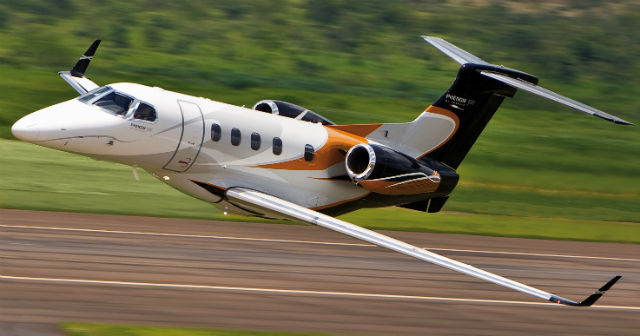Businesses and individuals were richer than ever through the second quarter of this year, a new Embraer market analysis shows.
But those record profits and incomes for "high net worth individuals" still have not lifted the business jet market enough to fully recover from a four-year downturn, the company says.
The Brazilian airframer's analysis, released only three weeks before the National Business Aviation Association (NBAA) convention, paints an overall negative picture, but includes some bright spots for sellers of private and executive aircraft.
US corporate profits exceeded $2 trillion through the end of the second quarter, says Ernest Edwards, president of Embraer's executive jets division. Meanwhile, high net-worth individuals with disposable incomes of more than $1 million now control more than $11 trillion in North America alone, with the Asia-Pacific region now boasting the largest number of high net worth individuals overall.
Ordinarily, that should be good news for the overall economy and for business jet sales in particular. So far, all that extra cash is not translating into dramatically improved results. Global GDP growth, is expected to dip slightly to 2% in 2012, Edwards says.
 |
|---|
| Embraer |
"We don't know what they're doing with the money," Edwards says. "We believe they are sitting on the money."
Most worrisome for business jet manufacturers, a gradual reduction in the number of available used aircraft on the market halted in the middle of the third quarter, he says.
"It could be due to a whole bunch of [new] aircraft coming on the market," Edwards says. "We don't have enough data at the moment to enlighten you further on that."
But Embraer's outlook is informed with more positive signs as well.
The sector hardest hit by the 2008 downturn - light business jets - has started to show new signs of life in the long-depressed North American market, Edwards says.
"We are seeing, and other OEMs are reporting, an uptick in business in North America," he says.
Embraer also is encouraged by the data that points to reserves of cash of companies and individuals all over the world.
"This leads us to believe that once there is confidence in the economies, that people are going to start spending money," he says. "Corporate flight departments with policies to change their aircraft every five years - seven years, 10 years, whatever their polices are - are priming themselves, we hope, to look into what their replacement aircraft are going to be."
Even so, Embraer has maintained what it calls a "conservative" sales outlook for its own business jets over the next 10 years. If the slow-growth recovery continues, Embraer projects selling 930 units, worth about $24 billion. If the market lapses again into crisis, the company forecasts sales of 780-790 units over the same period.
Some market analysts have expressed concerns about the health of Embraer's business jet backlog in recent weeks. JP Morgan and Cowen and Company have downgraded ratings to neutral for Embraer stock, citing weak business jet sales as one factor.
But Edwards believes the market analysts have been too pessimistic about his division's backlog management. Some of the order cancellations noticed by the Wall Street analysts for Embraer business jets this year were actually initiated behind the scenes in 2011, he says.
"It's not like we entered 2012 and [we said], 'Oh my God, we've taken cancellations!'," Edward says. "Happily, that is behind us now and we're not seeing the [same] rate of cancellations. We still see the odd cancellation, but not anywhere near the rate that we've seen in 2010 and 2011."
Source: Flight International























